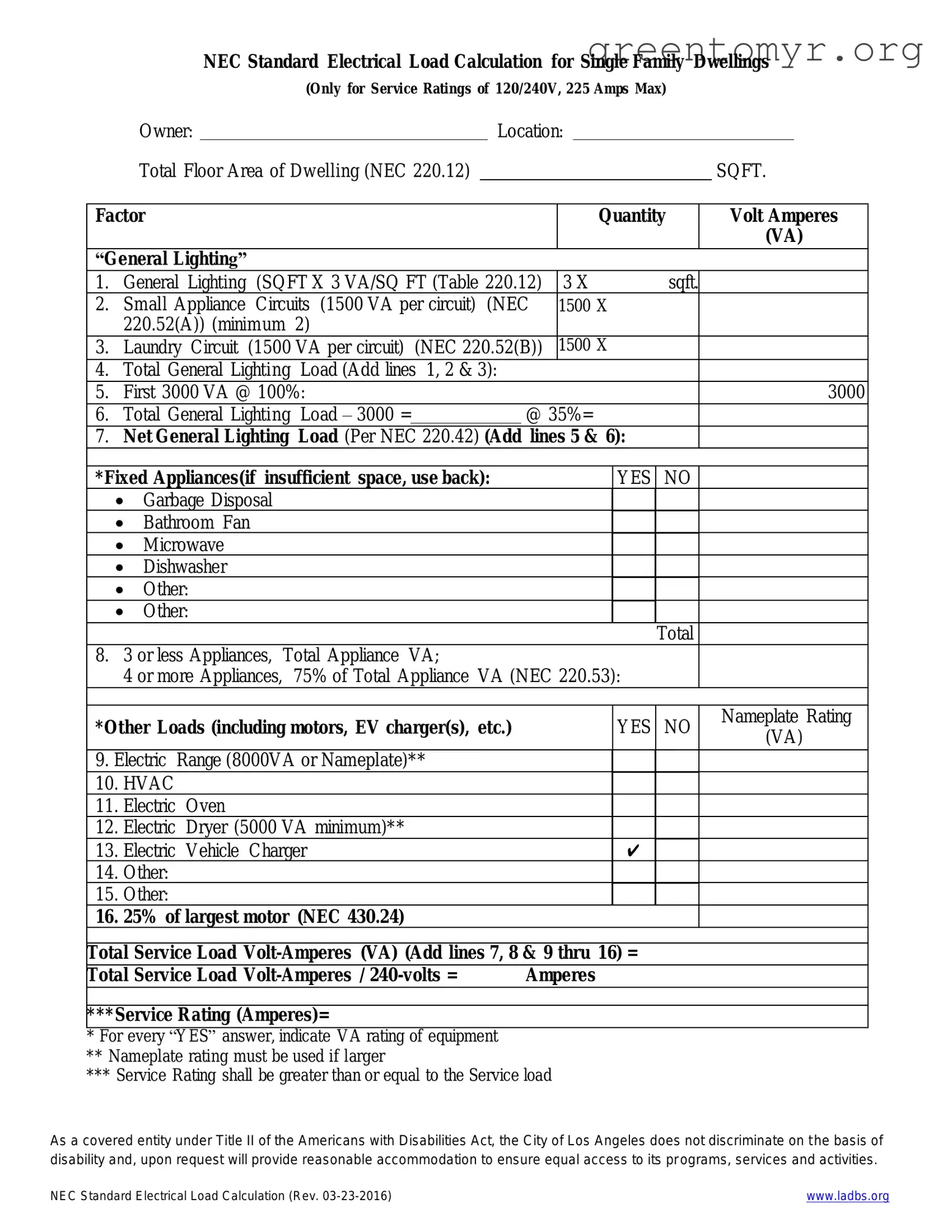The LADBS NEC Standard Electrical Load Calculation form is a document used to calculate the electrical load of a structure in compliance with the National Electrical Code (NEC). This form helps ensure that the electrical system can safely handle the anticipated demand, reducing the risk of overloads and hazards.
This form is generally required by electrical contractors, architects, and engineers involved in the design and installation of electrical systems. Any project that involves new construction, renovations, or load changes may necessitate this calculation.
Why is the electrical load calculation important?
Calculating the electrical load is crucial for several reasons:
-
Safety:
It ensures that the electrical system is properly sized to handle the load, minimizing the risk of electrical fires.
-
Compliance:
Many jurisdictions, including Los Angeles, require adherence to NEC standards to meet local codes.
-
Efficiency:
An accurately calculated load helps optimize the performance of electrical systems.
The LADBS NEC Standard Electrical Load Calculation form is available for download from the Los Angeles Department of Building and Safety (LADBS) website. You can also visit one of their offices to get a physical copy.
The form typically requires:
-
Details about the project, such as address and type of construction.
-
Types and quantities of lighting and receptacle loads.
-
Appliance load data, including major systems like HVAC and kitchen equipment.
-
Calculated load values, which will be used to determine the total electrical demand.
How is the load calculated?
The load is calculated using specific formulas outlined in the NEC. You'll assess various components, including lighting, heating, appliances, and other devices. Be sure to follow the NEC guidelines as you determine the load requirements.
Many jurisdictions, including LADBS, are moving towards electronic submissions. Check the LADBS website for information on electronic filing options and any specific requirements for submitting the form online.
Failure to complete and submit the electrical load calculation form may result in delays in obtaining the necessary permits. It could also lead to non-compliance with local building codes, which may incur fines or rework of electrical installations.
Processing times can vary based on the volume of applications. Typically, it may take anywhere from a few days to a couple of weeks. For the most accurate estimate, contact LADBS directly or check their online resources for current processing times.
If you have questions regarding the form or the load calculation process, reach out to LADBS customer service or consult with a licensed electrician. Many professionals can provide insights based on your specific project needs.

